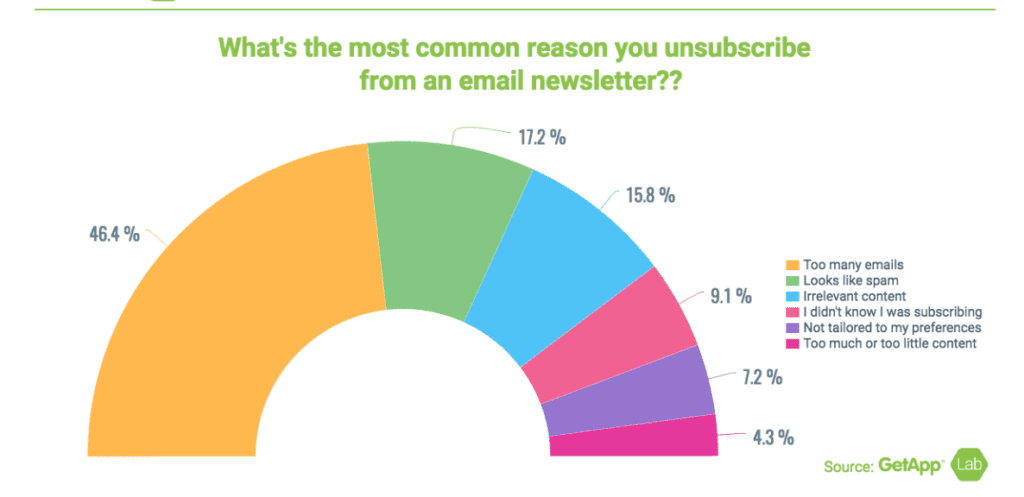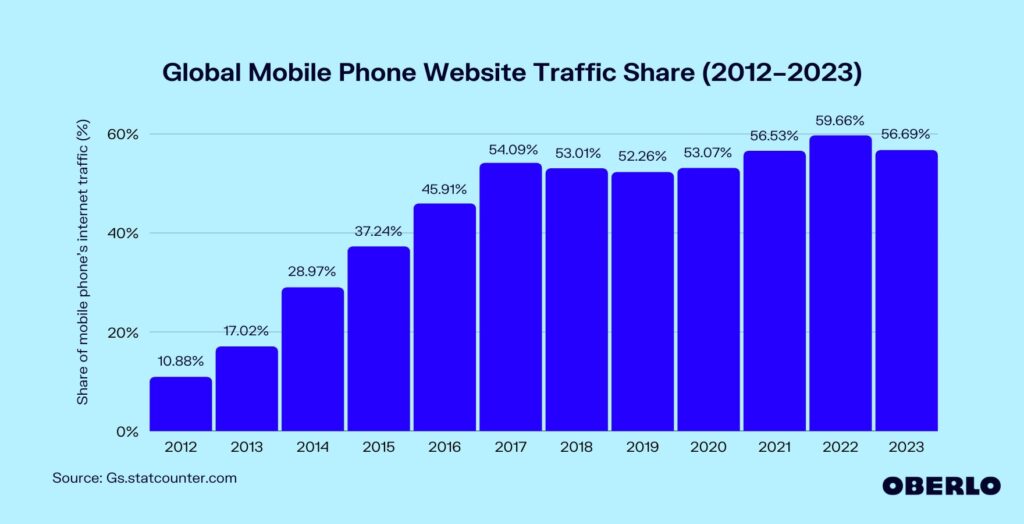If you believe that email marketing has lost its relevance, it’s time to reconsider! In today’s multifaceted digital landscape, email marketing remains a cornerstone of any successful business strategy, and it’s here to stay.
Mastering effective email marketing doesn’t require a Ph.D. in rocket science, but it does demand a well-structured approach and vigilance against common pitfalls. Many small enterprises initially struggle to cultivate their email subscriber base, often prioritizing social media and events. However, the truth is that social media and email marketing are complementary, and when harmonized effectively, they yield remarkable growth.
At the heart of this growth lies the Holy Grail: customer loyalty. Avid brand enthusiasts become enthusiastic advocates, spreading the word far and wide. The secret sauce? Nurturing a loyal customer base through proficient email marketing is one of the most potent and lucrative marketing strategies in existence.
Here at BrandsBoostr, we specialize in crafting robust email marketing strategies for our clients. We also collaborate closely with them to uncover the common missteps that can unwittingly impede progress. Indeed, there exists a formula for effective email marketing, and this article aims to shed light on the “do nots” to help you cultivate an engaged subscriber list.
Remember, the inbox is sacred territory, and infiltrating it carries great responsibility. Regrettably, many individuals sign up for email newsletters only to forget about them, consigning valuable messages from companies they are likely interested in into the abyss of the unread. This not only hinders the distribution of your exceptional products and services to potential customers but can also adversely affect your rankings within customer relationship management (CRM) software.
Hubspot’s research reveals that a staggering 81% of small business owners rely on email as their primary method for acquiring customers. Moreover, 80% of small businesses regard email marketing as their foremost technique for customer retention.
With statistics like these, it’s crystal clear that email marketing is alive and thriving! Nevertheless, it’s easy to make inadvertent errors or get trapped in unproductive routines.
Many of the most prevalent email marketing blunders are surprisingly easy to evade once you know what to watch for. However, these errors are so widespread that you may not even detect them until it’s too late.
First, let’s start with the basics.
What is Email Marketing?
Neil Patel, the master of all things digital marketing, defines email marketing as such:
Email marketing is a digital marketing strategy based on sending emails and developing relationships with prospects and customers. An effective email marketing strategy converts prospects into customers and turns first-time buyers into recurring customers.
Seems simple, right?
Email marketing has experienced its share of highs and lows within the marketing industry. However, thanks to the abundance of CRM software options available today, starting an email marketing campaign has become more accessible and cost-effective than ever before.

For businesses looking to promote products or services and maintain direct communication with their customer base, email marketing remains the most effective and immediate means of reaching subscribers. The challenge lies in enticing individuals to subscribe before you can engage with them via email.
Given the deluge of emails flooding people’s inboxes in the digital age, it can be daunting to assess and potentially overhaul your email marketing strategy critically. Yet, in the grand scheme of things, such efforts are pivotal for your company’s growth. Additionally, in the event of any unforeseen disruptions to social media channels, diversifying your communication methods with customers is a wise move. Overreliance on a single channel, including email marketing, is never advisable.
There’s a prevailing misconception that email marketing is no longer relevant. This misunderstanding often arises due to the proliferation of alternative customer engagement platforms. However, the truth remains that email marketing continues to be a robust channel for reaching customers. Virtually everyone possesses an email address and regularly checks their inbox. While diversifying your outreach across platforms is wise, it’s equally essential not to overlook the enduring power of email marketing.
If you’re grappling with challenges in your email marketing strategy and contemplating its abandonment, consider reviewing this list of common email marketing mistakes before making a final decision. You might find that a few minor adjustments can rectify the issues at hand, breathing new life into your email marketing efforts.
10 Common Email Marketing Mistakes to Avoid
Every challenge encountered in business presents an opportunity for transformation and optimization. In the realm of digital marketing, identifying and rectifying unconscious errors can be a pivotal game-changer.
If you’ve encountered obstacles in your email marketing endeavors or are unsure where to begin, this guide is designed to steer you away from stagnation and toward a seamless flow of progress. It’s remarkable how minor adjustments can yield significant results.
Should you find that your email marketing efforts aren’t yielding the desired outcomes, it’s possible that you’re falling victim to some of these common mistakes:
1. Neglecting to Send a Welcome Email
When a potential customer visits your website and takes the initiative to sign up for your newsletter, they’ve already shown a significant level of interest in your brand. Whether you enticed them with a lead magnet (a valuable free resource) or shared insightful content, their decision to join your community is a noteworthy step. Fortunately, with most Customer Relationship Management (CRM) software, you can effortlessly configure automated welcome emails for new subscribers. These emails don’t need to be overly lengthy or excessively detailed, but they go a long way in demonstrating your appreciation for their willingness to share their precious email address.
Solution: Create an automated welcome email that greets each new subscriber warmly, outlines what they can expect from your newsletter, and perhaps shares something intriguing about your company or yourself. On a per-email basis, welcome emails have been shown to generate a whopping 320% more revenue compared to other marketing messages. This presents a substantial opportunity to provide a token of goodwill, extend a warm welcome to your community, and subtly introduce your offerings.
2. Avoiding Authenticity and Overemphasis on Sales
The tone and personality of your emails are unmistakable to recipients. If your emails come across as rigid, robotic, or excessively focused on sales pitches, you risk alienating your audience. The objective of email marketing isn’t to bombard recipients until they make a purchase, it’s about nurturing connections and gently encouraging engagement with your products or services.
Solution: Inject personality into your emails! Why not add some flair? People are more inclined to make a purchase when they feel a genuine connection. Humanize your brand or yourself, allowing people to relate to your mission and ethos. Constantly pushing sales messages is unlikely to lead to actual sales. Instead, consider telling compelling stories, sharing authentic testimonials, or simply reaching out to say hello and offer value in each email. Building relationships is the key to success in email marketing.
3. Avoiding a Double-Opt-In Strategy
Many businesses employ a single opt-in approach, where a new subscriber simply fills out a form and is immediately added to an email list. While this can rapidly expand your subscriber count, it’s crucial to remember that quantity doesn’t always translate to quality. If your subscribers aren’t genuinely interested or engaged, your email marketing efforts may fall flat.
With a double opt-in strategy, subscribers must confirm their desire to be on your mailing list before you can start sending them emails. This confirmation step ensures that individuals who signed up by mistake or with incorrect email addresses won’t clutter your list. Additionally, it helps filter out fake emails and spam accounts, preserving the integrity of your email metrics.
Solution: To implement this, all you need to do is include a double opt-in confirmation step in your welcome email. While it might add an extra layer of complexity and result in some lost subscribers, the ones who do double opt-in are genuinely interested and more likely to engage with your emails. Remember, having a small, active list is better than a large, unresponsive one. Size isn’t everything when it comes to email marketing.
4. Neglecting a Clear Call to Action (CTA)
In every email you send, including your welcome email, it’s essential to incorporate a clear and compelling call to action (CTA). Your subscribers need to know precisely what action you want them to take, or else they may read your email and move on without engaging further.
However, be cautious about overwhelming your recipients with too many CTAs, as this can confuse or distract them. Stick to one well-defined CTA per email to maximize your click-through rates.
Solution: Before you start writing your email, define its purpose. Why are you sending it? What action do you want your recipients to take? What’s the desired outcome? Write your email in a way that provides value and builds up to the CTA. The key is to offer substantial value so that readers can’t resist clicking the CTA button. Here are some effective CTA examples that drive conversions:
- Shop now
- Sign up for the event
- Take advantage of our sale
- Forward this to a friend
- Share on social media
- Join our community
- Read now
- Watch now
Remember, a well-crafted CTA can make all the difference in turning email engagement into meaningful actions that benefit your business.
5. Irregular Email Sending:
Inconsistency in your email communication can have detrimental effects on your marketing efforts. Just as bombarding your audience with too many emails can lead to unsubscribes, sending too few can result in people forgetting about your brand or offerings amidst their busy lives. People juggle a multitude of responsibilities, from work to family commitments, and they’re constantly bombarded with information.
To ensure your email marketing strikes the right balance, aim for consistency. Depending on your business type, sending 1-4 emails per month can be highly effective. Unless you’re a major publication with a quarterly magazine or a similar offering, maintaining a regular schedule is crucial.
Solution:
- Content Planning: Sit down with a calendar and plan your email content. Consider what you have to share and what’s in the pipeline for creation. Then, determine the frequency of your emails. This can be bi-weekly, weekly, or monthly. Avoid exceeding this schedule unless you have genuinely newsworthy updates to share. Having a content calendar will help you stay on track.
- Clear Calls to Action (CTAs): In each email, include a clear and compelling call to action. This guides your recipients on what steps to take next, increasing the chances of engagement.
6. Sending Excessive Emails:
On the flip side, inundating your audience with too many emails can be equally problematic. Few things are more irritating than a relentless stream of sales pitches in your inbox. This leads to low open and click-through rates and a surge in unsubscribes.
Solution:
- Respect Recipients’ Inboxes: Understand that people’s email inboxes are personal spaces. Just because someone subscribed to your newsletter doesn’t grant permission to flood their inbox daily. Show respect for their time and attention.
- Review and Adjust Content: Reevaluate your email content strategy. Scale back your emails to a frequency of once a week at most. This reduction will likely result in higher open and click rates. Additionally, consider sending a survey to your subscribers to understand their preferences better. Your goal is to cater to their needs and interests.
Remember, it’s about finding the right balance between consistency and respecting your audience’s boundaries. Providing valuable content and respecting your subscribers’ time and preferences will ultimately lead to better email marketing outcomes. After all, giving people what they want is a win-win for both you and your audience.

7. Improper Subscriber Segmentation
Neglecting proper subscriber segmentation can significantly impact your email marketing success. Segmentation is your secret weapon for boosting sales and ensuring your emails resonate with your audience. When you send the same message to your entire email list, you’re missing a golden opportunity. Segmentation enables you to categorize your subscribers based on their behaviors (such as purchases, opens, and clicks), demographics (like gender, age, and location), or preferences, such as coupon enthusiasts or newsletter subscribers.
Sending irrelevant emails is a recipe for unsubscribes, deletions, or worse, being marked as spam. To maximize the relevance of your emails, effective segmentation is essential.
Solution:
Most CRM software offers easy-to-use segmentation tools based on subscriber activities and actions. For demographic segmentation, consider collecting additional subscriber information. At the very least, segment your list into openers, clickers, and purchasers. Craft tailored emails with different content and subject lines for each segment. Experiment with various offers. By doing this, you’ll gain valuable insights into what your audience wants and can deliver it directly. Email marketing segmentation strategies are remarkably effective.
8. Overlooking Mobile Users
In today’s digital landscape, mobile is king. Mobile devices account for a staggering 52.6% of global web traffic. This statistic is a game-changer if your emails are only optimized for desktop web browsers. Ignoring mobile optimization can cost you a substantial chunk of your customer base and increase unsubscribe rates. Smartphones reign supreme across all age groups, making them the primary devices for browsing, researching, reading, interacting, and purchasing.
Solution:
Adapting your emails for mobile is a straightforward yet crucial fix. Avoid relying too heavily on images in your emails, as some email applications don’t automatically load them. Large messages might get truncated, reducing the chance that readers will click the “show full message” button. To ensure your emails look great on mobile, send yourself test emails and address any formatting issues promptly. By optimizing for mobile, you’ll reach and engage with a more extensive and mobile-savvy audience.

9. Avoiding A/B Testing
When it comes to optimizing your email marketing, you simply can’t afford to skip A/B testing. It’s the compass that guides you through the turbulent waters of email campaign success. From email content and subject lines to CTAs, every element demands scrutiny. Without A/B testing, it’s like sailing blind – you won’t know what’s truly working. Most CRM software offers A/B testing features, often part of their premium plans. These tools empower you to test everything, from email formatting to image choices, subject lines to CTAs. The result? Concrete data that reveals your customer base’s preferences and what drives engagement.
In the fiercely competitive realm of email inboxes, your messages must shine from the very first impression. A/B testing is your secret weapon for understanding what truly resonates with your audience.
Solution:
To get started, delve into your CRM software and locate the A/B testing functionality. Create a structured spreadsheet to experiment with different subject lines, CTAs, and other elements. This data-driven approach will enable you to make informed decisions going forward. Additionally, A/B testing is an excellent strategy for audience segmentation, as it provides insights into actions or inactions. Armed with this information, you can tailor your content to precisely match what your audience desires, ensuring you deliver value every time.
10. Neglecting List Building
Remember, your email list won’t magically grow on its own. Even if you have a meticulously designed email, an irresistible offer, and a compelling call to action (CTA), all these efforts will fall flat if there’s no one on your list to receive them. Building an email list is a multifaceted endeavor that requires both passion and strategy.
One effective starting point is to offer a valuable freebie. In today’s digital landscape, people are hesitant to join email lists unless they receive something valuable in return.
Solution:
Your freebie could take various forms, such as a confidential podcast, an unlisted YouTube video, a digital guide, an exclusive audio recording, or access to a thriving online community. Once you’ve created your enticing free offer, make sure it’s highly visible across your branding and website. Place it prominently on your homepage, promote it vigorously on social media, and mention it in interviews or press coverage. Consider using a pop-up or top bar banner on your website to ensure that visitors can easily access your enticing offer. This strategy ensures that you not only capture email addresses but also provide real value to your audience from the get-go. Building your email list is a labor of love and strategy that pays off in the long run.
Email Marketing: Avoiding Mistakes and Maximizing Results
Mistakes are an inevitable part of any journey, and email marketing is no exception. While this list of email marketing pitfalls isn’t exhaustive, it’s a valuable starting point to steer your marketing efforts in the right direction. If you’re new to email marketing, now is the perfect time to explore potential pitfalls so you can embark on your journey with confidence.
Above all, don’t let setbacks discourage you to the point of abandoning your email marketing efforts entirely. Remember, every mistake can be rectified, even your email list.